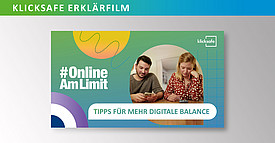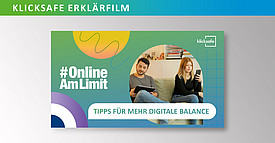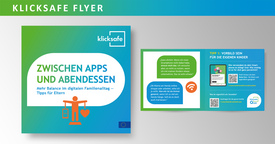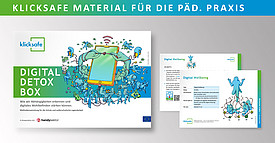What is Digital Wellbeing?
Who hasn't experienced this: We actually wanted to put the smartphone away a long time ago, but we're still glued to our devices. The pull of the digital world is getting stronger and stronger. Thinking about our digital wellbeing is becoming increasingly difficult for many of us. In an age of constant accessibility and excessive use of digital media, "offline time" or "detoxing" is repeatedly recommended to reduce "digital stress" in everyday life.
Almost all current social networks and services function according to the principles of digital attention. They are designed so that more and more time is spent on social media than originally planned. Comparisons with unattainable beauty ideals or confrontation with hate messages, cyberbullying, fake news or content relevant to youth protection can have an additional negative impact on our digital wellbeing.
Digital Detox
Digital detox, detoxing or media fasting - there are numerous terms and reasons for pressing the "off" button more often or pulling the plug right away. Digital detox means "digital detoxification" or "digital fasting. It refers to the time that a person consciously refrains from using electronic connection devices such as smartphones, tablets and computers, either partially or completely.
A digital detox can be a good way to start reflecting on one's own media consumption and making meaningful changes.
To achieve digital wellbeing, young people also need to learn about content that does them good and encourages them. Using media in a meaningful way and, for example, creating content themselves and using it creatively instead of just passively consuming it can be fulfilling.
Try it out and find your balance between online and offline!
Six tips for more Digital Detox in everyday life
First, check how often and how long you use your phone every day. To do this, you can download an app that lets you see how often you look at your phone. When doing this, look out for privacy-compliant apps.
Many services such as YouTube or Instagram and operating systems such as iOS offer the option of documenting screen time or setting limits. iPhone users (from iOS 12) can find the "Screen time" function in the settings. This gives you an overview of your actual screen time and you can start to consciously reduce it.
Which apps do you really need and which ones can you delete because they are just pointless time wasters? Check the accounts you follow on social media: Do they contain meaningful content? Or are they rather annoying because a lot of advertising is displayed or topics are constantly repeated?
- Disable push notifications so you're not constantly tempted to open a particular app.
- Use time limits for apps that you use a lot.
- Set notifications so that only calls and messages from particularly important people can trigger an audible signal or the vibration alert.
Deliberately put the smartphone in another room or turn it off. Make your bedroom a smartphone-free zone and turn off the device an hour before bedtime.
With the help of a media use contract, families can set rules that apply to everyone. In this way, children develop a better sense of healthy media use, and parents also find a better balance and take on their role as role models more effectively.
Help with detoxing through klicksafe materials
Video series #OnlineAmLimit - your network. your life. your limits.
These two videos give parents, young people and everyone else concrete tips for more balance in everyday digital life.
Flyers and posters
Social media, games, online shopping: digital media are a natural part of everyday life. But the daily online time can quickly get out of hand and lead to addictive behavior or stress. Parents often find it difficult to understand their children's enthusiasm for TikTok reels and the like. The flyer gives parents simple tips for more understanding and awareness when it comes to media use. And for more serenity in everyday digital family life. With lots of ideas to try out!
The poster gives 10 helpful tips and can be ordered as a print version. It can be hung up in the classroom, PC room or at home, for example, so that everyone can keep an eye on the tips.
Digital Wellbeing at School
The Digital Detox Box is a collection of 16 selected methods from the media education practice of the klicksafe and Handysektor projects. Here, young people learn to evaluate their own usage behavior, to use digital devices more consciously, and to think about digital well-being. The strategies range from cell phone fasting and time-out exercises to hand-strengthening finger yoga.
In our material "Ommm online - How to increase our digital well-being", young people will find tools they can use to regulate technologies and thus increase their digital well-being. This also includes creating a healthy balance in media and technology use and, for example, abstaining from media for a while.







